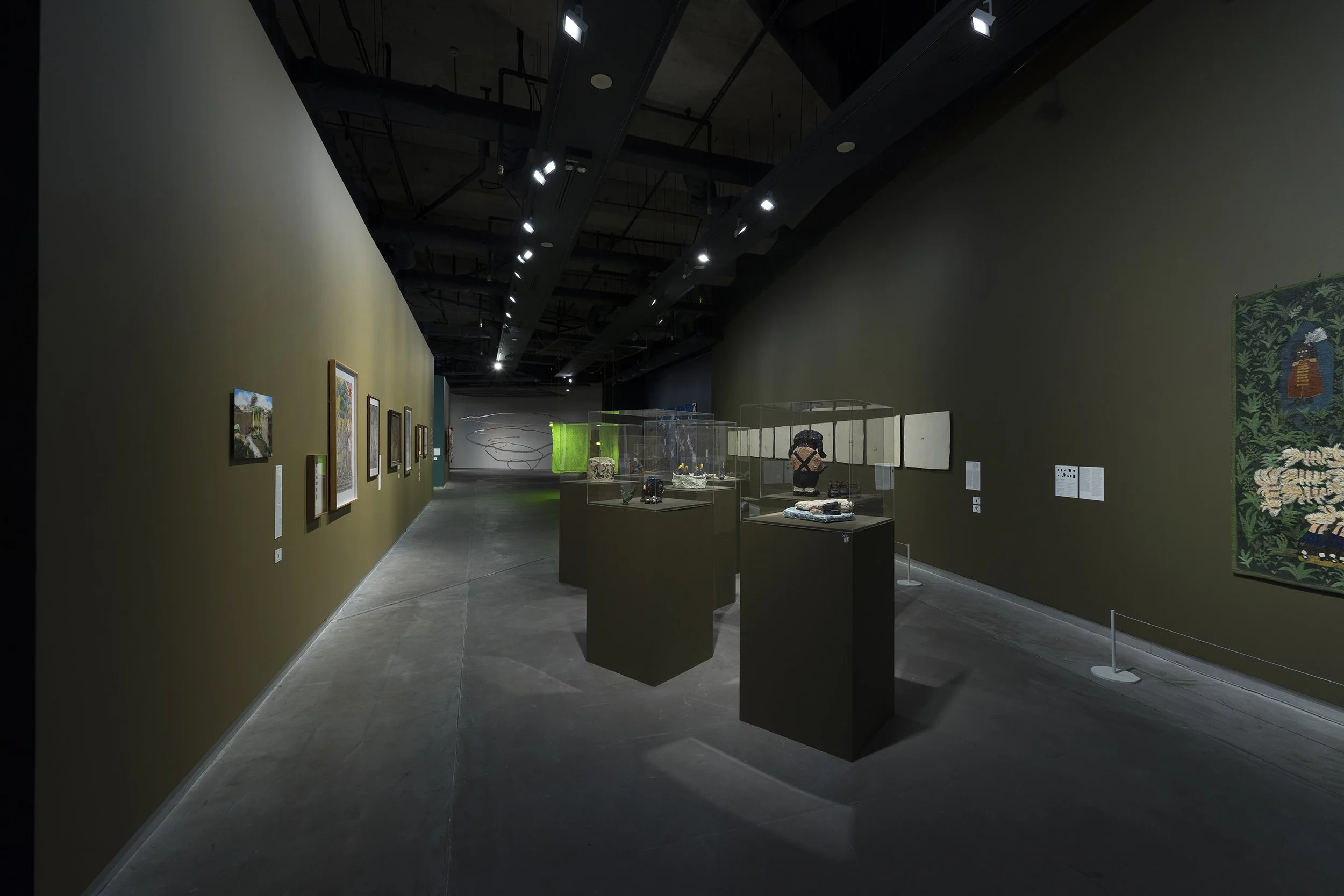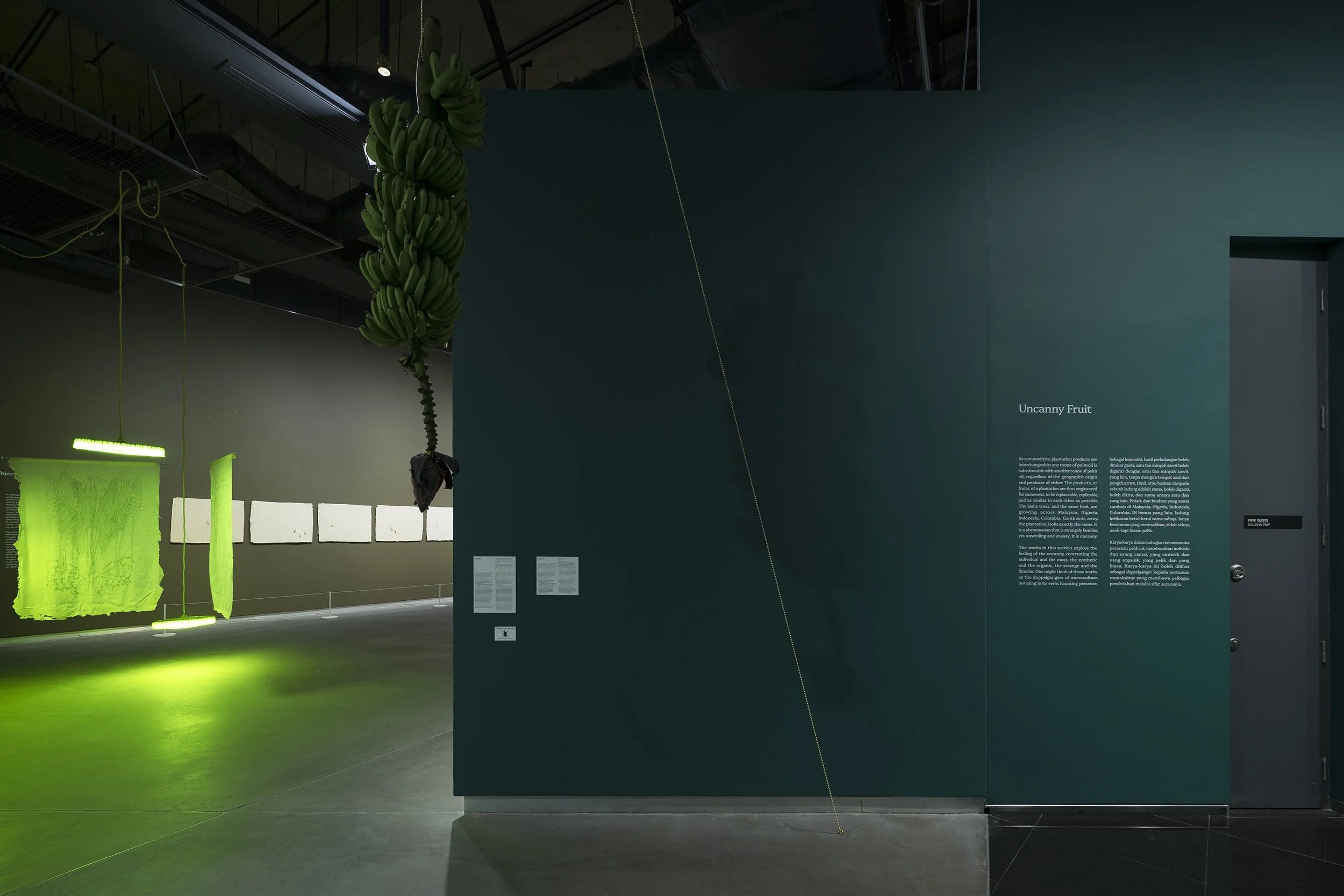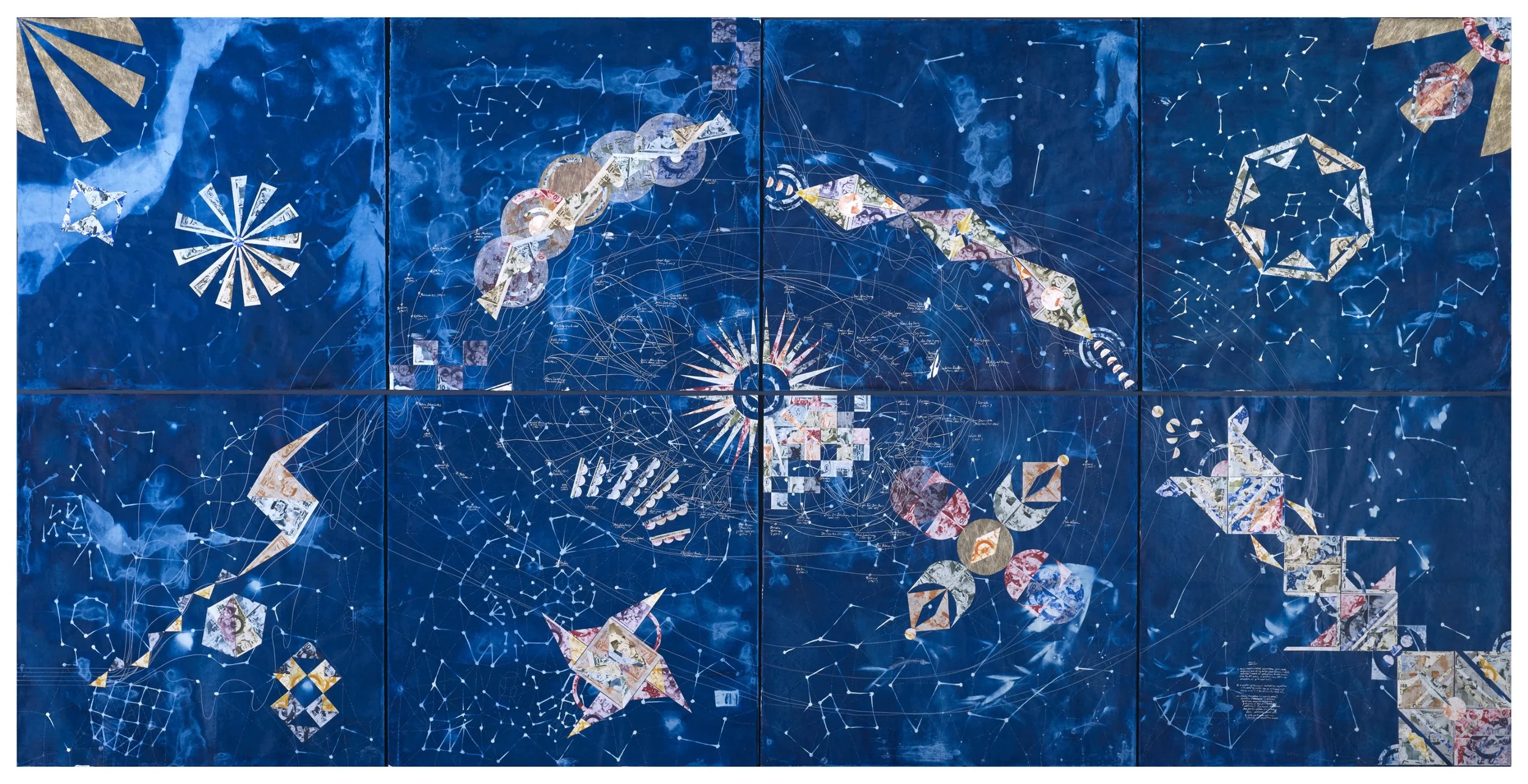The Plantation is Not Past but Prologue
Refusing historical closure, treating plantation system
This is a winning entry from the sixth Fresh Take 2025 writing contest. For the full list of winners and prizes, click here.
Yong Mun Sen, The Women, c. 1950s, oil on board, 43 x 53cm. Image courtesy of ILHAM Gallery.
If one enters The Plantation Plot expecting a tidy chronicle of Malayan rubber and palm, the exhibition immediately disorients. The historical anchor, a suite of Nanyang paintings (c. 1950s to 1960s), first appears to promise pastoral tranquillity. But the vistas, long hailed as regional modernism, are accompanied by a caption that undermines nostalgic presumptions: it writes that the artist Yong Mun Sen found his inspiration by observing a Japanese artist sketching his own father’s plantation prior to World War II, a time where many Japanese artists and photographers supplied the Japanese Army with intelligence. Disquietingly close are works from Kelly Sinnapah Mary’s series Notebook 10, l’enfance de Sanbras (2020-2021). Among them: a paper sculpture “cake” iced chalky white and topped with stubby brown heads that double as candles, stages Sinnapah Mary’s own diasporic mythmaking, its frosting-slick grotesquerie scorching the sugar-coated fiction of a benign plantation landscape. The placement is less prelude, more provocation.
Installation view of The Plantation Plot, 2025. Image courtesy of ILHAM Gallery.
Organised by ILHAM Gallery in collaboration with KADIST, and curated by Lim Sheau Yun, The Plantation Plot proposes a curatorial wager: to write against the grain of the linear plantation narrative that economic textbooks rehearse. This is not a historical show, at least not one preoccupied in rendering the plantation as a progression of knowable i.e. teachable events. Instead, the network of works folds, splices, and replants its subject till chronology warps into recursion. The curatorial writing enlists heavy-hitting thinkers—Anna Tsing on love, Hernan Diaz on fictions, Sylvia Wynter on plot—as if to remind us that plantations are theory factories as much as they are monocrop rows. Curatorial method becomes medium: not a vessel of resolution, but a terrain of ideas where coherence is constantly contested.
The question is not whether The Plantation Plot resolves these confrontations but whether it stages them generatively. By and large, it does. Threaded throughout is an argumentative spine: the plantation is not just a site of extraction, but also a world-making template whose logics infest algorithmic agriculture, migrant-labour regimes, and even financial derivatives. Donna Haraway’s concept of the Plantationocene permeates the air, so much so that one must ask: can an art exhibition bear the epistemic weight of that term? Curator Lim Sheau Yun’s answer is wisely partial. At its strongest, The Plantation Plot does what Anna Tsing prescribes: to follow the mushrooming edges of ruin and listen for strange alliances. In weaker moments, it echoes those alliances too faithfully: sprawling, tentative, adrift in the systems it diagnoses.
“The plantation is not just a site of extraction, but also a world-making template whose logics infest algorithmic agriculture, migrant-labour regimes, and even financial derivatives.”
Gogoularaajan Rajendran, Coolie’s Chorus, 2025, single channel video, video excerpt courtesy of the artist
While the wall texts summon Wynter or Haraway, the works are most persuasive when working through the senses. The exhibition announces itself by ear: the lilting vocals from Gogularaajan Rajendran’s Coolie’s Chorus (2025) drift toward the foyer. In a 70-minute single-channel video, singers reconstruct folk tunes once sung by indentured Tamil labourers on Malayan estates. The video is part rehearsal, part improv session. Phrases are tentatively hummed, then debated, played with, and finally lifted into song. Neither pure preservation nor pastiche, the melodies practise what American scholar Saidiya Hartman calls “critical fabulation”, suturing archival cavities with imaginative flesh.
Corey McCorkle, Pendulum, 2016, banana bunch and brass hardware, dimensions variable. Installation view in The Plantation Plot (2025), at ILHAM Gallery. Image courtesy of ILHAM Gallery.
At the entrance, one is greeted by Corey McCorkle’s Pendulum (2016), a stalk of Cavendish bananas hanging inert from a steel chain, rotting in real time, a quietly catastrophic clock calibrated to colonial botany. Nothing swings; expansion calcifies into stasis, collapse, odour. One can even smell the end: a lingering mustiness that disrupts the plantation’s myth of perennial productivity. If American cultural theorist Fred Moten speaks of “hapticality”, the feel that precedes thought, then these works trust sensation over the cold logics of colonial plantation.
Connie Zheng, As It Is: Nothing Lasts Forever, 2025, ink, pencil and collage of intaglio and cyanotype prints on gampi, mulberry, hemp and cotton papers, 184 x 92inch. Image courtesy of ILHAM Gallery.
Where the exhibition sometimes slips is when its drive for a multiplicity of ideas and forms tips into morass, where density obscures rather than deepen critique.In the commanding centre is Connie Zheng’s 4.6-metre As It Is: Nothing Lasts Forever (2025), which charts centuries of commodity capitalism as a cosmic map. Intaglio cuts of banknotes float like stars; myriad corporate lifelines form a constellation in an indigo sky. From a distance, the wall twinkles like a Bloomberg terminal as re-imagined by an astrologer; up close, the density of nodes dilutes the web of Empire until its threads seem equivalent, flattening the asymmetries of extraction it wants to illuminate. Mapping complexity is not, it turns out, the same as interrogating it. Awe elbows out introspection. A similar tension shadows the surfeit of video works elsewhere in the show: Khvay Samnang’s haunting Rubber Man (2014) where the artist, naked, stomps about rubber plantations, his body sluiced in raw latex, remains viscerally compelling, but in a forest of glowing screens its ecological lament feels unmoored.
Still, to dwell on these is to misread the wager. Surplus, rather than summary, seems to be the organising principle. Sonic residues, speculative cartographies, and sensorial traps accumulate to the edge of saturation. Such excess is a strategy. Its curatorial weave occasionally snags, but in daring to embroider so many unruly threads, it exposes the plantation for what it always was: not a tidy field of parallel rows but an entanglement of profit, labour, myth, desire. Networks may choke, yes, but they can also blossom into unexpected clearings.
What emerges is an affective dissonance. One exits ILHAM Gallery with the eerie conviction that the plantation is not past but prologue, an operating system still booting in the shadow of Kuala Lumpur’s glimmering towers. History here is ambient, a humidity cloying everything we think we survey in clarity.
Like any institutional show that entreats with raw colonial wounds, The Plantation Plot cannot help but stir a legitimate hunger for reparative justice: restitution, redistribution, some kind of counterbalance to centuries of expropriation. The exhibition neither placates nor dodges that appetite. Instead, it lets the demand hum in the walls while rerouting attention towards potentialities: ludic myths, fugitive botanics, solidarities that cut across Caribbean banana, Brazillian rubber, and Malaysian oil-palm. There is no closure here, only a splinter under the skin. What remains is an unsettled thought that the plantation is not a ruin to be excavated, but an engine still revving, hardwired in logistics, hedged in commodity futures, pollinating new enclosures. The plot thickens, the plot decays, and the plot keeps reseeding itself everywhere we look.
Disclosure: Prior to writing this review, through cloud projects I have become involved in an initiative with Gogularaajan Rajendran to archive plantation songs. This archival project has not yet commenced, and I was not involved in the production of Coolie’s Chorus nor its presentation in ‘The Plantation Plot’.




